Fwd by Debbie Quinata, Agatha Haun
Video fwd: Guam Take me back
Guam Residents Unhappy About Relocation of US Marines from
Okinawa
Original source by Akahata (Japan)
3-14-09, 10:21 am
Residents of Guam are so reluctant to accept the US Marines to be stationed
on the island of US territory in the Pacific, that the Guam governor would
sign the ordinance passed by the Guam Legislature to hold a referendum over
the planned reinforcement of US forces in Guam, said the speaker of the Guam
Territorial Legislature.
Japanese Communist Party member of the House of Councilors Inoue Satoshi
heard this while he was visiting Guam on March 8-9 while leading a JCP
investigation team in preparation for the upcoming parliamentary discussion
on the so-called Guam Agreement recently signed by Japanese Foreign Minister
Nakasone Hirofumi and US Secretary of State Hillary Clinton. The agreement,
if it comes into force after being approved by both countries, will force
Japan to pay the costs for constructing US military facilities on Guam.
Speaker of Guam's Territorial Legislature Judith Won Pat and representatives
of residents' organizations in meetings with the JCP team proved that the
Japanese government's argument that Guam is welcoming the US Marine Corps
(USMC) to be relocated to Guam is false.
In May 2006, the Japanese and US governments reached the final agreement on
the realignment of U.S. forces in Japan, which included the relocation of
8,000 US Marines and 9,000 families from Okinawa to Guam as well as Japan's
payment of about 6.1 billion dollars as part of the cost for the USMC
relocation project totaling about 10.3 billion dollars.
On February 17, the two governments agreed to remake the roadmap, including
the payment of the 6.1 billion dollars, into an official treaty entitled:
AGREEMENT BETWEEN THE GOVERNMENT OF JAPAN AND THE GOVERNMENT OF THE UNITED STATES OF AMERICA CONCERNING THE IMPLEMENTATION OF THE RELOCATION OF III MARINE EXPEDITIONARY FORCE PERSONNEL AND THEIR DEPENDENTS FROM OKINAWA TO GUAM.
After visiting the site for the construction of the new USMC facilities, the
JCP investigation team met with landowners and residents.
On March 9, after a briefing from Japan's consul general in Guam, they met
and held about two hours of talks with Speaker of Guam's Territorial
Legislature Won Pat.
The Speaker stated that the US Department of Defense has provided Guam with
little information concerning the relocation plan and that no public opinion
survey has been held on this issue. She expressed anxieties over further
contamination from sewage water from the new military facilities as well as
possible sexual assaults by the increased presence of Marines.
She referred to Guam's Governor Felix P. Camacho, who is expected to sign
the bill to hold a referendum on the relocation issue.
Specifically on the Japan-US agreement on the USMC Guam relocation, which is
expected to be discussed in Japan's Diet, she stressed that the Diet is
called upon to listen to Guam and that she is ready to provide information
concerned to any Japanese political parties.
On the USFJ realignment issue, she indicated the possibility that additional
units will come to a new US base to be constructed in the Henoko district of
Nago City, even after a part of the US Marines are moved to Guam.
The JCP team toured the island guided by a representative of the Chamorro
Nations, an organization of aboriginals in Guam.
Upon watching CNN news reports on mass layoffs sweeping Japan, they said
that they don't understand why Japan has agreed to pay so much money for a
foreign government instead of stimulating the Japanese economy.
Guam's landowners association chief Antonio told Inoue that he has not been
paid a penny by the military every since his land was taken for use by the
U.S. Andersen Air Base. He expressed worries over an additional
expropriation of land as a result of the USMC Guam relocation.
JCP Inoue stated, "It is extraordinary for Japan to use tax money for the
construction of a military base on foreign territory. I want to convey Guam
people's voices to the Japanese Diet so that the new Guam Agreement will be
rejected."
Posted by Added Entry at 11:21
si Debbie Quinata <dquinata@gmail.com>
I Nasion Chamoru
P.O. Box 6132
Merizo, Guam 96916
(671) 828-2957
Subscribe to:
Post Comments (Atom)

![[URGENT PLEA: In Update] EMERGENCY in GANGJEONG Since AUG. 24, 2011](http://2.bp.blogspot.com/-3iz8k-USXVY/TlmRYhhIYtI/AAAAAAAAL2c/9dbF85ZIkIs/s227/jejusit.jpg)

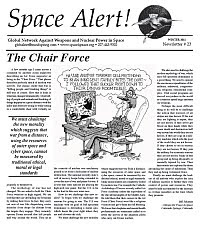

![[Solidarity from Japan for the Jeju] 253 individuals and 16 groups/organizations](http://2.bp.blogspot.com/_gnM5QlRx-4c/TR_YeNVE1yI/AAAAAAAAHWQ/ARyf6oQN0S0/S227/jeju_12_10j.jpg)
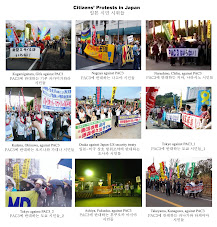
![[Translation] Korean organizations' statement: Immediately cancel the joint ROK-US drill Nov 26](http://2.bp.blogspot.com/_gnM5QlRx-4c/TPOE8VKXHFI/AAAAAAAAGlM/8lryt-8sFjc/S227/1.jpg)
![HOT! [Hankyoreh Hani TV] Beneath the Surface: the investigation into the sinking of the Cheonan](http://4.bp.blogspot.com/_gnM5QlRx-4c/TOI83qht8aI/AAAAAAAAGXU/22SW6Q5ntV8/S227/HaniTV%2BCheonan.gif)

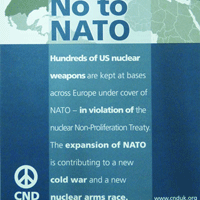

![[Translation]Statement against illegal inspection and unjust lay-off by the Kunsan USAFK!(Nov_2010)](http://4.bp.blogspot.com/_gnM5QlRx-4c/TOPLsVkZMqI/AAAAAAAAGZs/3YnnckIyAaY/S227/gunsan%2Bprotest.gif)
![[Translation] Korean organizations' statement against dispatching special force to the UAE on Nov.](http://4.bp.blogspot.com/_gnM5QlRx-4c/TOP95zHXlCI/AAAAAAAAGak/E0Ug1XtUFfM/S227/antiwarpeace.jpg)
![[Translation] Stop, Joining MD!: South Korean activists' statement and writing on Oct. 25, 2010](http://3.bp.blogspot.com/_gnM5QlRx-4c/TOP7Es4_2sI/AAAAAAAAGac/eWVMPD-U4p0/S227/StopMD.jpg)
![[In Update] People First, NO G-20 (Nov. 6 to 12, Korea)](http://2.bp.blogspot.com/_gnM5QlRx-4c/TJd53XBzHlI/AAAAAAAAFQo/ldO9JPE3eqo/S227/left21_G20.jpg)
![[International Petition] Stop US helipad plan in Okinawa to save great nature](http://4.bp.blogspot.com/_gnM5QlRx-4c/TKC2AHRNzBI/AAAAAAAAFUo/yGWXODTw_uM/S227/yanbaru_w.jpg)

![[Global Network] against the first launch of Quasi-Zenith Satellite, Japan, on Sept. 11, 2010](http://4.bp.blogspot.com/_gnM5QlRx-4c/TIowa1boy4I/AAAAAAAAFDI/82rAi98uq-c/S227/Qzss-45-0_09.jpg)

![[In update] Some collections on the Koreans’ protests against the sanction & war on Iran](http://4.bp.blogspot.com/_gnM5QlRx-4c/TJMvke6t8zI/AAAAAAAAFO4/tamQ8LUnOOA/S227/No+Sanction+on+Iran.jpg)
![[Three International Petitions] to End the Korean war and peace treaty(or peace resolution)](http://1.bp.blogspot.com/_gnM5QlRx-4c/THef7bzWxYI/AAAAAAAAE44/wwdzSDfYhdw/S227/border.jpg)
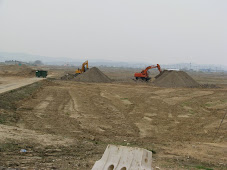


![[Collection of Documents] No Base Learning and Solidarity Program_Korea(June 14 to 20, 2010)](http://1.bp.blogspot.com/_gnM5QlRx-4c/TCTvVuN8NeI/AAAAAAAAEek/8vBJVaHdk10/S227/No-Base-banner.jpg)
![Site Fwd:[John Hines] A U.S. Debate coach’s research trip on the Issues of Korea](http://3.bp.blogspot.com/_gnM5QlRx-4c/TINCO36mzzI/AAAAAAAAE_w/Rds12NcBOXM/S227/Jeju-Peace-Tour.jpg)


![[News Update] Struggle Against the Jeju Naval Base since Jan. 18, 2010](http://1.bp.blogspot.com/_gnM5QlRx-4c/S1vvWaP25uI/AAAAAAAACkg/QvpW1tgOlKM/S226/scrum1.jpg)


![[Urgent] Please spread the Letter!: There was no Explosion! There was no Torpedo! (May 26, 2010)](http://4.bp.blogspot.com/_gnM5QlRx-4c/S_9JmsKEU7I/AAAAAAAAEP8/sAWjSPqxzUI/S227/grounded.jpg)
![Text Fwd: [Stephen Gowans]The sinking of the Cheonan: Another Gulf of Tonkin incident](http://1.bp.blogspot.com/_gnM5QlRx-4c/TAL_FtYKQ-I/AAAAAAAAERE/NEEMijiEcRM/S227/lee-myung-bak.jpg)
![[Japan Focus]Politics in Command: The "International" Investigation into the Sinking of the Cheonan](http://1.bp.blogspot.com/_gnM5QlRx-4c/TBMJ2syJzyI/AAAAAAAAEZU/uTYZccU5vyk/S227/wen_jiabao_and_lee_myungbak.png)
![[Japan Focus] Who Sank the SK Warship Cheonan? A New Stage in the US-Korean War and US-China](http://2.bp.blogspot.com/_gnM5QlRx-4c/S_iQ2vE5ZpI/AAAAAAAAEOU/Oo1SPcAe8FE/S227/buoy_map.gif)
![[Updated on 12/13/10] [Translation Project] Overseas Proofs on the Damages by the Military Bases](http://4.bp.blogspot.com/_gnM5QlRx-4c/S-qSj59gPLI/AAAAAAAAEGM/mwjlFtPE-jo/S227/missile.jpg)
![[International Petition] Close the Bases in Okinawa](http://3.bp.blogspot.com/_gnM5QlRx-4c/S8-z3DYNwNI/AAAAAAAADo4/OswTSchK09M/S227/2.jpg)

![[In Update]Blog Collection: No Korean Troops in Afghanistan](http://4.bp.blogspot.com/_gnM5QlRx-4c/SwnlLD9IewI/AAAAAAAAB9E/oUPssnpNidA/S226/No-Troops-to--Afghanistan.jpg)
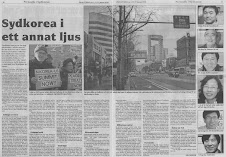

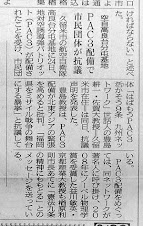

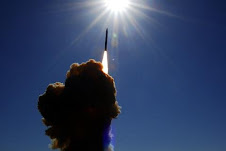






No comments:
Post a Comment